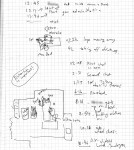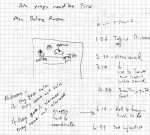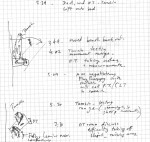This week I observed Botox and Intrathecal Baclafyn pump change clinics at Kids Rehab. My aim in observing these clinics was firstly to gain some insights into the operating conditions experienced by people in these clinics, the narrative of the patients visit and staff interactions, and the ergonomic factors that I’d need to address (five adults gathered around a child/young person on the bench). During my residency I also plan to observe Dialysis and Burn Dressing clinics at the hospital.
The clients that I observed at these clinics represented a broad range of abilities from severe physical and intellectual disability, to relatively mild spaciticity, and people with severe physical disabilities without intellectual/developmental disabilities – who were able to communicate with their parent/carer via facial gestures etc. It was a very humbling experience to listen to and observe these children/young people and their parents/carers – many of whom have been using the clinic for many years.
There was also a diverse mix of ethnicities across the families visiting the clinic. Most of the patients I observed have been coming to these clinics for some time now (Botox injections are topped up every six months). As part of this observation process I documented the duration of each stage of the process, and made drawings describing the configuration of the furniture (treatment benches, chairs etc.) the room and the people in it, to help me get a sense of what could be possible as far as an interactive experience goes: how much time and space would the children/young people (and their carers) have to engage with the work that I am developing.
The Botox clinics take place in three stages:
- Consultation with medical team, client and their carer during which doctors and physios/Occupational Therapists observe, assess and discuss the movement abilities, and progress since last treatment – and identify and prepare the injection sites with local, topical anaesthetic (EMLA cream) – anywhere between 10-20 minutes;
- Waiting for the EMLA cream to take effect – usually done in the waiting room/reception area at Kids Rehab, watch videos, playing games, waiting with parents etc. – about an hour;
- The injection procedure itself , in which botox is injected into specific locations inside the muscles, using an ultra-sound device to monitor the location and depth of the injection – between 5 and 20 minutes.
On the whole, the impression I left with was that there was not a whole lot of room in these clinics (a lot of people all gathered around the child/young person being treated), and that what ever I design, would need to also accommodate clients with severe dystonia (involuntary movements of hands, arms, legs etc.) – which presents some interesting challenges as far as obtaining reliable heart-rate signals goes. The waiting room looked like one of the more interesting situations that I could introduce an interactive artwork into – where they would have time to explore, and an opportunity to prepare for their procedure.




